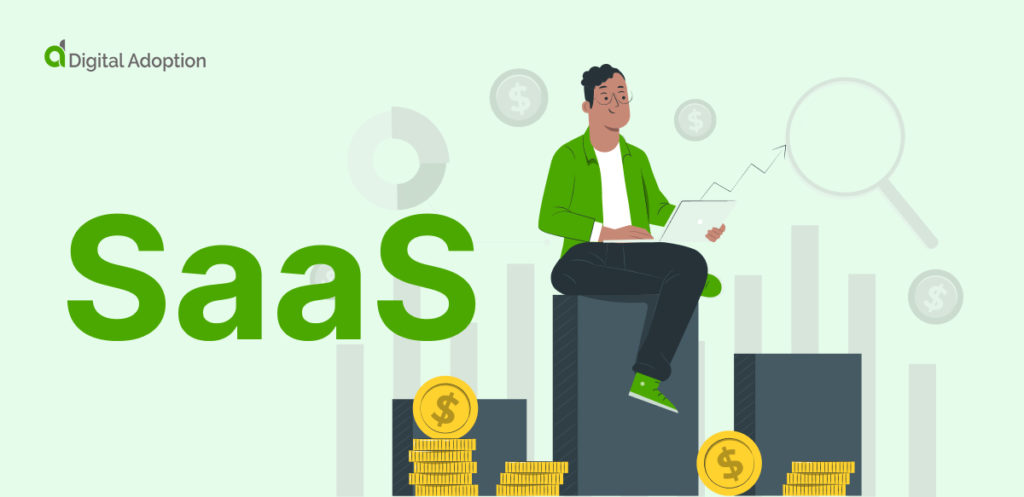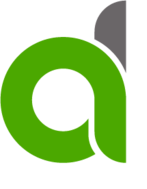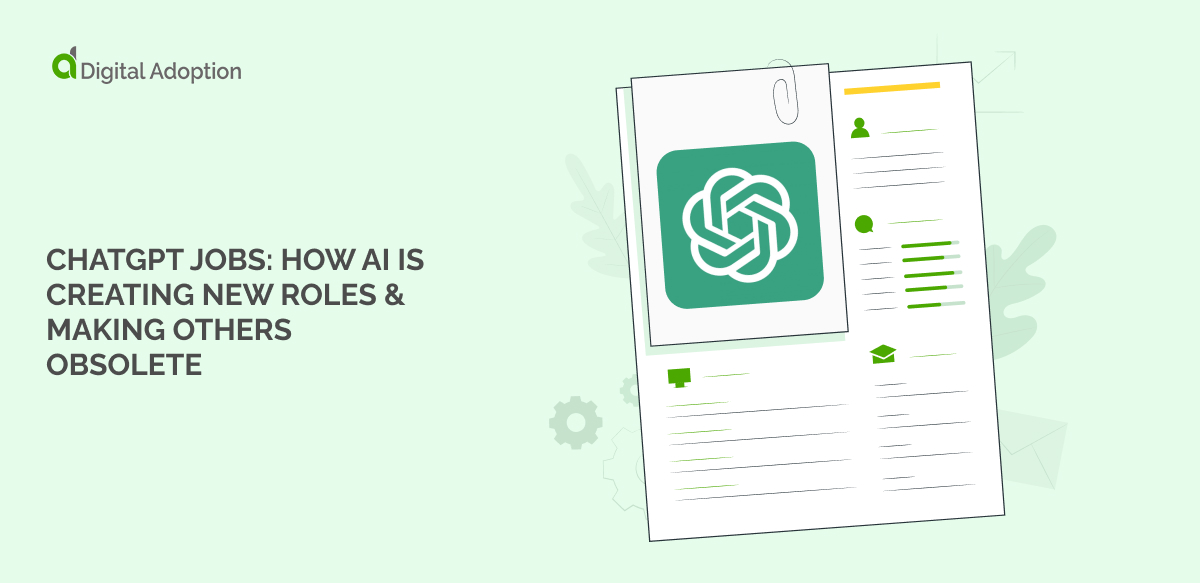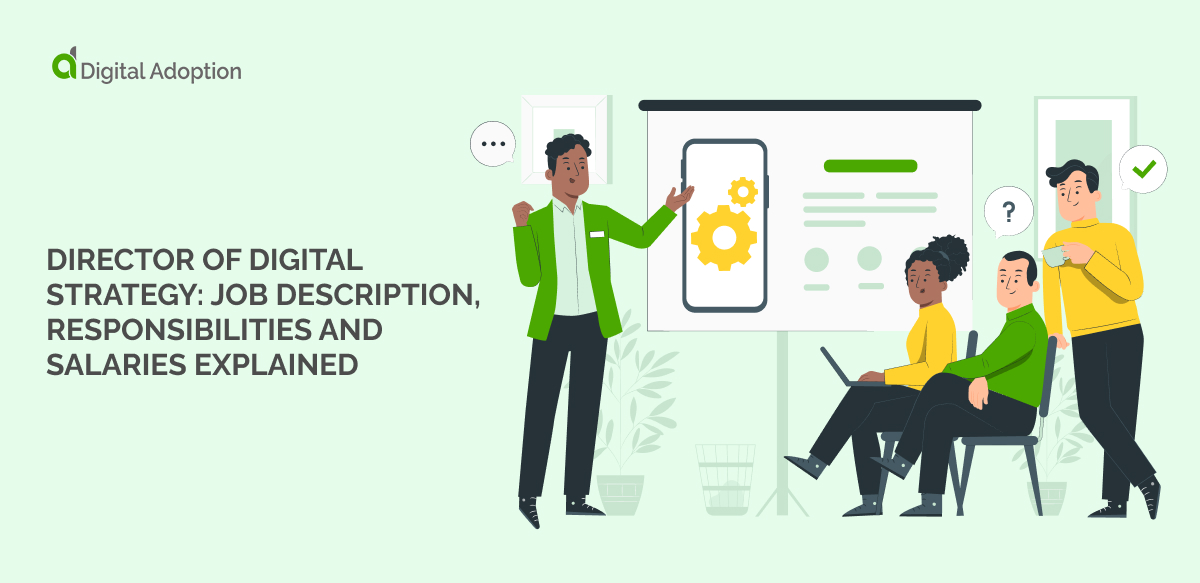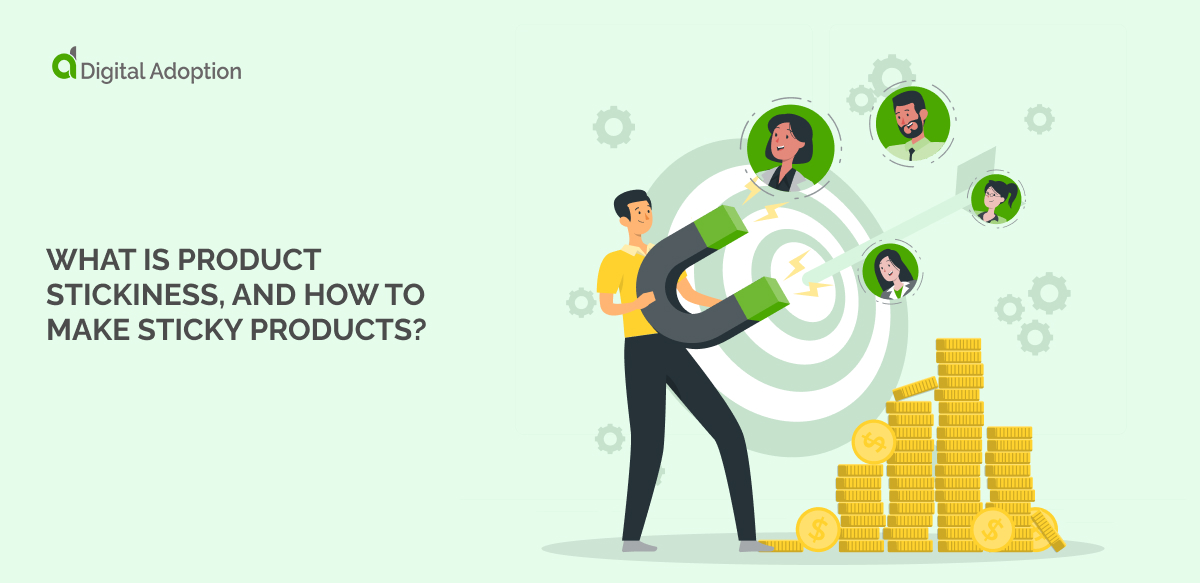According to Gartner, Software as a Service (SaaS) optimization is the most common way companies purchase and use software solutions as part of a digital adoption strategy. Knowing which software to buy is a challenge for IT departments, and the shared features between different software subscriptions lead to overlapping features and wasted money. Companies use a SaaS spend optimization strategy to ensure they get the best value for money when they optimize SaaS spend practices.
But what is SaaS spend optimization? What is the business value of the SaaS spend optimization process? And why is SaaS spend optimization crucial for companies today? We will explore all of these questions, beginning with a definition.
What Is Software as a Service (SaaS) Expenditure Optimization?

SaaS spend optimization involves a proactive approach to SaaS optimization to reduce the quantity of SaaS licenses or apps. The spend optimization process helps companies avoid SaaS waste, cost accumulation, and avoidable security risks. It tracks all existing SaaS software licenses and detects under and over-licensed SaaS applications. It also balances subscription costs and SaaS licenses against organizational needs to reduce software spend.
Companies consider cloud services superior as they offer better customer advantages due to the flexibility and scalability of features and pricing with better business outcomes, enhanced competitive edge, and boosted revenue. The cloud revolutionized how companies purchase software licenses, and most companies now focus on SaaS applications. On-premise applications are now rarely utilized, and this is likely to continue.
The issues occur when too many SaaS solutions are purchased, as the cloud infrastructure becomes less managed. A SaaS optimization platform is needed to optimize SaaS spend strategies, reducing financial waste.
The most significant reasons for wasted money on SaaS and cloud services are:
- Unclear ownership.
- Automatic renewals of unused licenses.
- The lack of visibility of overlapping SaaS subscriptions.
These issues occur because of a lack of policy on SaaS application procurement, leading to companies paying fees for tools with the same purpose or ones they no longer use.
SaaS spend optimization helps organizations track which subscriptions they own and use, but in what other ways is this crucial for business?
Why SaaS Spend Optimization Is Crucial
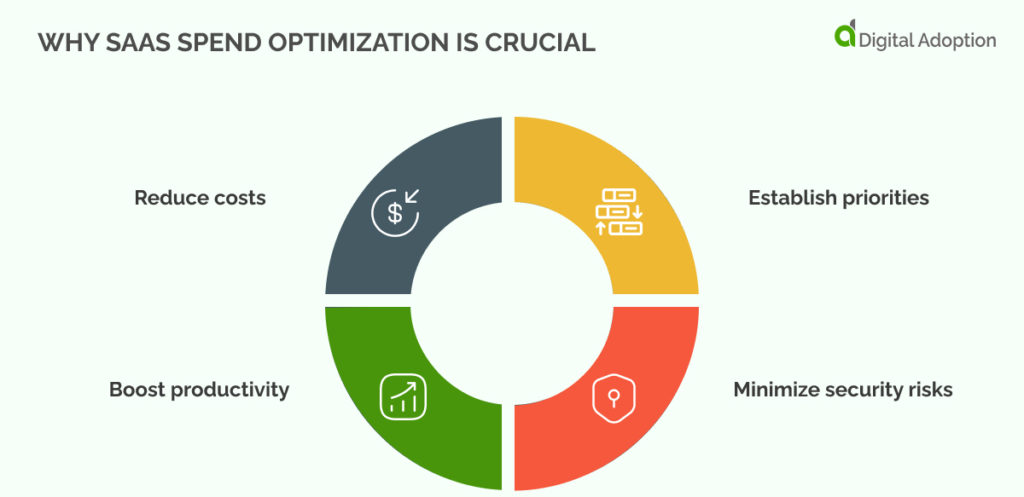
Without SaaS spend optimization, companies waste enormous amounts of capital in over and under-subscribed and unused SaaS solutions. Using technology value optimization to define the values of currently utilized technologies and manage them efficiently is key to optimizing resources.
Reduce costs
Companies can save vast resources by optimizing licenses and accounts efficiently when they carry out spend optimization. The main reason companies implement SaaS spend optimization is to reduce their costs. When you set the right processes in motion, you can control and manage your software spending as you see where companies create waste within unused licenses and underutilized or unused apps.
Establish priorities
Success is defined by understanding what software you use, how you use it, and what needs it fulfils. This feedback supports prioritization plans as you review the benefits of tools you use against new tools. Reports and spend tracking allow your company to see how much is spent by collecting usage data of the apps and services you use.
Boost productivity
Eliminating duplicate software helps your employees get the most out of their digital tools by increasing the efficiency of workflows via actions that streamline spending. A company-wide meeting must take place to discuss business needs and if the current software serves these needs optimally. Organizations benefit from monitoring employee digital adoption rates and encouraging cross-departmental collaboration to share skills and learning. All of these actions boost employee productivity and efficiency via cost reduction.
Minimize security risks
SaaS optimization allows IT team members to add or remove software users based on role to reduce security risks and unnecessary access and lower costs. Complete visibility of all SaaS spending and licenses allows you to track employees’ subscription habits. This action makes it clear when employees are using apps when they shouldn’t be using them.
These are the many reasons SaaS spend optimization is crucial. But how can your company create a strategy to implement all of these critical features?
10 Strategies To Optimize Your SaaS Expenditure

There are many ways of achieving SaaS optimization for your SaaS expenditure. Here are the best ten strategies to ensure you are doing everything possible to approach SaaS spend optimization most effectively and efficiently.
1. Make your SaaS stack visible
The visibility of the SaaS stack is essential to the SaaS spend optimization process. You can achieve this by taking stock and making an expenditure inventory, including all expenses, contracts, and the number of licenses your company has. Doing so allows your business to see what they are using and why. This action supports decisions on future optimizations.
2. Regularly take stock
Take stock of your SaaS usage to optimize the SaaS spend. The needs of large businesses with various software and subscriptions will change often. Monthly audits ensure the company is utilizing all SaaS applications effectively and remind you to review which are needed.
3. Identify unauthorized applications
Unauthorized apps may not be apps that have been installed without permission but simply software that all carry out similar functions. It can also mean that an employee has unauthorized access. Communication is essential to establish and review who needs access to what software.
The existing users of your company may utilize Google Workspace and store documents on Google Drive. On discovering that an employee has purchased a Dropbox account, you can remove the unauthorized account and consolidate unnecessary SaaS licenses by putting it all on Google Drive.
This action saves the Dropbox fee for the company, increasing communication as IT or HR lets the employee know of this change and reminds all staff that document storage should be via Google Drive only.
Any security vulnerabilities should be dealt with quickly to mitigate risk, especially for attacks on HR systems that store sensitive employee information. Companies must develop policies to ensure that unauthorized application use is dealt with quickly and securely, with communication at its core.
4. Promote organization-wide adoption of apps and productivity
If an app is helpful for your organization, encourage widespread company-wide adoption by promoting the app adoption on a smaller scale to bring it to the broadest user base. Information is key to informing staff of why the SaaS software is vital to the technology value optimization of the company.
Team champions for specific software can be learning points for staff wanting to know more about the basic or advanced features of new software.
5. Negotiate contractual agreements
Many factors influence your ability to get the best deal from a SaaS provider. Examples include future business, terms, usage, volume, and loyalty. These factors come into play when renewing software subscriptions, touching base with the SaaS apps vendor, and asking about a lower rate.
6. Plan regular subscription adjustments
Create a review and adjustment schedule to ensure you only have the SaaS solutions you need and use. Eliminating unused licenses is at the heart of the SaaS spend optimization approach, and a schedule is a structured way of effectively cutting waste and optimizing SaaS spending.
7. Integrate workflow automation

SaaS optimization platforms can establish which licenses are needed for employee accounts, driving account setups with usage patterns and data. Automation ensures the system automatically assigns the correct licenses to the appropriate staff.
8. Regularly collect employee feedback
User analytics are essential to inform SaaS leaders on what apps are helpful and easy to use and reduce efficiency and productivity due to frustration or lack of employee training. Companies must act on this feedback by removing unused paid premium features to drive the business forward using the software budget for essential software features.
9. Make the SaaS application inventory available to employees
Increase SaaS adoption and reduce unwanted user access by making the SaaS application inventory available to employees. Doing so means that employees use accounts properly because the staff knows what apps to use.
10. Plan for future growth
SaaS spending plans must look to the future to ensure that resources are always available to invest in new technologies. Ensure that technology research staff collaborate with the finance team to build a plan for growth and development to make SaaS spending the core of business sustainability and expansion.
Now that we have looked at strategies for SaaS spending, we must consider the business value of these tools.
The Business Value of Software as a Service (SaaS)
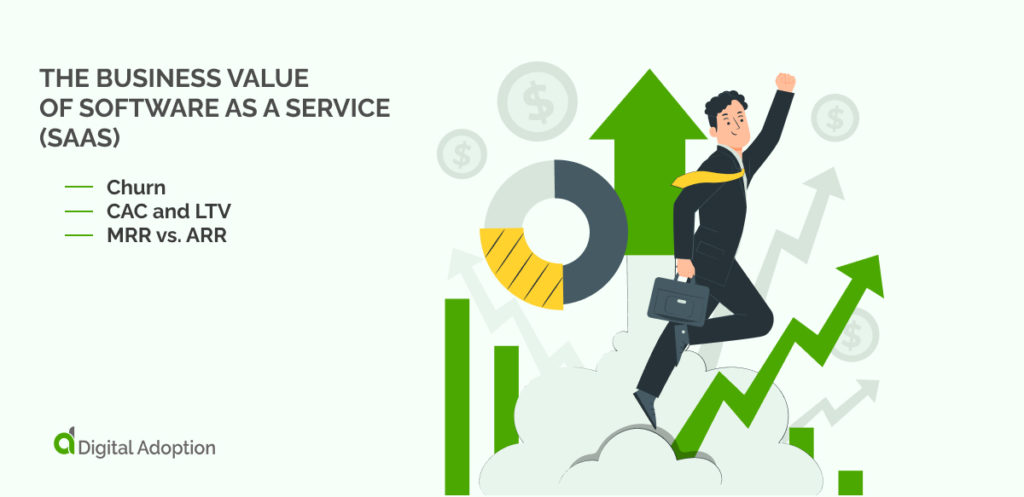
Organizations need to assess the business value of a SaaS solution before investing. The factors that affect the business value of SaaS applications are:-
- ARR, which is business size
- Gross margin, or profitability
- Net revenue retention, which represents the product quality
- Growth rate, which is the company’s momentum
Companies use metrics to measure these factors, the first churn.
Churn
- Churn is a crucial metric for investors. Typical SaaS business models depend on a monthly subscription, and the churn metric determines how many subscribers cancel the services purchased, monthly or annually. A simple formula can calculate churn:
(Canceled customers/ total customers from the beginning of the year) x 100
CAC and LTV
- CAC represents the sales and marketing cost of acquiring a new customer. CAC is the customer acquisition costs, and LTV is the lifetime value of the profitability of your SaaS applications business. The CAC formula is:
- (Marketing/ potential new customers)
- LTV shows the average revenue a company can be generated from a customer. When a company’s CAC is half the LTV, it has good potential for growth. Conversely, if the LTV is half the CAC, the metric becomes a minus number, showing a business not to be profitable.
- Growth potential exists when the formula’s (LTV-CAC) outcome is positive.
MRR vs. ARR
- MMR is a company’s monthly recurring revenue which shows the revenue of a SaaS business over a specific month on a recurring schedule. ARR is the annual recurring revenue, offering the same amount over a year.
- Investors can be interested in MRR more than ARR because it can more accurately predict future income. ARR could be considered a less reliable metric for predictions as many market disruptions, such as new competition and regulations, can happen in twelve months.
- However, some investors believe that ARR presents a broader revenue perspective, with a more accurate and comprehensive view of a SaaS company’s present and future health. ARR is best suited to companies with seasonal subscription models.
These are examples of how companies can measure the business value of a service, but what SaaS optimization software is available that fulfills specific needs?
Software Solutions For Optimal SaaS Expenditure

Looking at the highest-rated SaaS applications to get the best software for your needs is the most effective way of procuring the most appropriate and highest-value solutions.
SaaS Cost Optimization

Airbase
Airbase is a comprehensive spend optimization platform that scales as companies grow from startups to large enterprises.
Airbase’s market segment is 83% mid-market and 15% small-business units.
Mesh Payments
Mesh is an all-in-one spend optimization platform that offers total visibility and control of every transaction to help you optimize your SaaS spending.
Mesh’s market segment is 61% mid-market and 38% small business.
Vendr
Vendr is an intuitive SaaS buying platform that seeks to change how companies find, buy and manage SaaS solutions.
Vendr’s market segment is 63% mid-market and 23% small business.
SaaS Apps Support
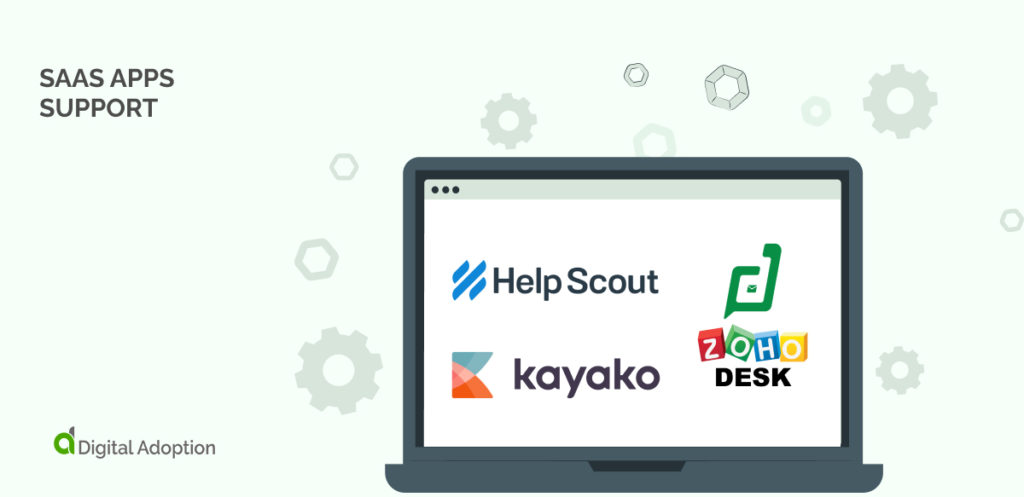
Help Scout
Help Scout platform offers multi-channel support for customers and businesses. It provides a shared team inbox, knowledge base capabilities with Google Docs, a self-service employee portal, and a real-time live chat feature with Beacon integration.
Help Scout market segment is smaller or growing companies.
Zoho Desk
Zoho makes Zoho Desk, a large company is known for its CRM software, which also makes support platforms. Zoho Desk offers features like a shared inbox, phone integration, and chat. Some features like chat are only available with the higher tier option.
Zoho Desk offers a free trial version.
Kayako
The company developed Kayako in 2001 as a highly intuitive help desk ticketing system, but it has continued to expand. Users can offer support across several communication channels, like chat and self-service support. However, these features are available with higher-tier plans only.
The vendor designed Kayako for larger companies.
Key SaaS Applications

Salesforce
Salesforce is a SaaS-only company and has a single flagship platform. The company adjusts the package to companies based on their needs and company size and type, for example, consumer products, education, or financial services.
Salesforce SaaS software caters to all market segments as the company adjusts the software based on requirements. B2C Companies often utilize software this vendor provides, such as banks and other CPG organizations.
Google is known for its leading browser and many other web products, but it is not a SaaS-only vendor. Google is known chiefly for SaaS-based productivity apps alongside the Google marketing and optimization platform. Google offers infrastructure products like Google Cloud and the Kubernetes engine and free apps like Google search. Older products like G-suite have been rebranded as Google Workspace, presenting it as a seamless SaaS product instead of grouping unrelated tools.
Google products are perfect for SMEs and developers who seek to build products within the cloud.
Microsoft
Microsoft now offers SaaS services after its successes in being the most popular operating system and providing Office suite software. Microsoft now offers their previously license-based productivity apps within the Microsoft 365 package of SaaS tools. This suite includes well-known apps like Word, PowerPoint, Outlook, and Excel and web-native SaaS solutions such as Teams and SharePoint.
Microsoft 365 suite is very diverse, as it is equally helpful for individuals and users in large enterprises. Microsoft SaaS is ideal for companies with existing infrastructure built around Microsoft tools.
Once you have selected a software solution to optimize your SaaS spend, it’s essential to look at best practices to ensure you get the most out of the SaaS apps.
Best Practices To Optimize SaaS Expenditure

There are three primary best practices to ensure your SaaS spend is optimized, beginning with complete visibility of your apps.
Complete Visibility Of Your App Portfolio
Create a clear visualization of all your app subscriptions, user licenses, SaaS costs, and contracts. Ensure that all apps managed or unmanaged by the IT department are included so an incomplete picture of app usage does not create that waste. When you achieve high visibility of your app matrix, you can make better-informed decisions about cancellations, future investments, and renewals. Doing so allows you to optimize your SaaS spend, increasing SaaS ROI.
Identify Your SaaS Owners
Ensure that the owner of the SaaS solution, the person responsible for procurement, is known to finance and IT for queries regarding renewal or cancellation. Companies must assign ownership to each app due to the high amount of apps that companies procure in today’s rapidly changing market. Knowing the app owner allows companies to act on optimization opportunities that present themselves as part of the process.
Monitor Your SaaS Usage
Automating SaaS adoption and usage is essential for efficiency and eliminating human error, as staff can miss schedules to monitor, review and act on usage rates. Companies must use metrics to measure app adoption and usage rates. They can use these data to generate analytics to inform future decisions about which SaaS apps they must renew for a particular subscription and which they should terminate to reduce costs.
When companies follow these best practices, it is no surprise that they can benefit from SaaS spend optimization . But how much investment goes into the SaaS portfolio for companies globally?
How Much Do Businesses Spend on SaaS?

Investment in SaaS increases yearly due to the flexibility of features, updates, and pricing, reflecting the rapidly changing needs of the tech business market. Statista predicts that SaaS spending will increase to $208.1 billion in 2023. And based on Flexera’s 2021 report, Workday, Google, ServiceNow, and Salesforce are the largest providers of SaaS, with Microsoft taking the largest share of 47%.
Flexera also reports that the leading spend optimization challenges companies faced in 2022 were too many processes (49%), increased vendor prices (59%), and maintaining spend efficiency (55%).
These percentages show how many companies felt that these challenges were somewhat of a challenge. Vendors must take note of these statistics to ensure that they provide competitive products at acceptable prices to remain sustainable. Companies using SaaS apps can learn from these statistics in prioritizing their SaaS optimization choices from these statistics.
SaaS apps are already used for nearly every business function, so what trends will emerge next year as SaaS utilization increases?
What 6 Emerging SaaS Trends Will We See In 2023?
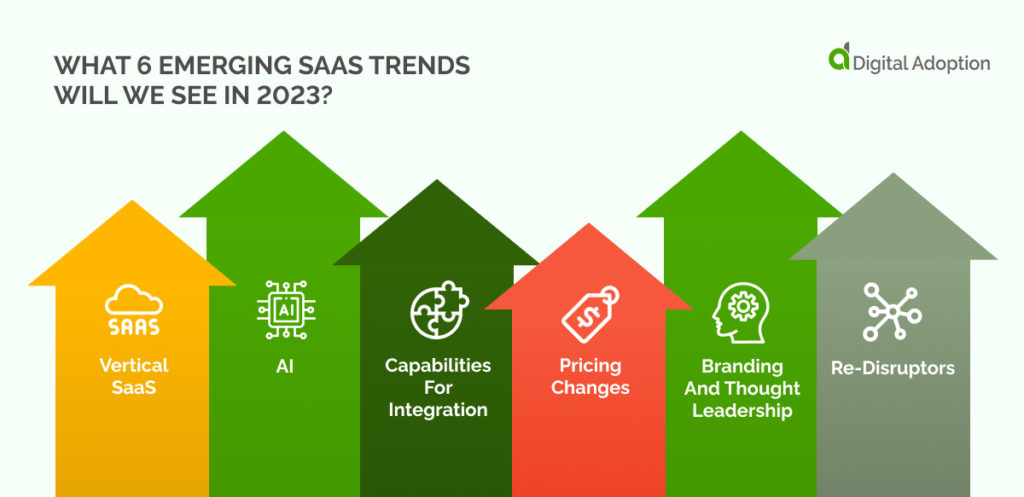
With the rapidly progressing technology of SaaS, we will be seeing some significant changes over the next few years. The first of these involves Vertical SaaS.
1. Vertical SaaS
Vertical SaaS is a targeted solution for certain supply chains and industries. This form of SaaS will become more prominent as organizations try to find more specialized solutions that demand fewer resources.
Because vertical SaaS is industry-specific, it allows the service to provide a higher quality of embedded customer intelligence. Other features include predefined KPIs and metrics, improved data governance, and boosted business value.
2. AI
Artificial Intelligence (AI) is becoming more widely utilized in many fields, especially business, as PwC predicts it will contribute $15.7 trillion to the global economy by 2030. So what part does AI have in SaaS?
AI is one of the major disruptors within the SaaS market for several reasons. SaaS-AI integration allows companies to personalize and automate services better, collect more insights from their data, and boost process efficiency, allowing staff to focus on more complex tasks.
3. Capabilities For Integration
SaaS products today include integration to prevent users from expanding their SaaS portfolio with an excessive number of third-party apps. This trend will likely continue into 2023 as SaaS vendors prioritize integration when updating existing software solutions and designing new ones.
4. Pricing Changes
Studies show that nearly every SaaS business noticed positive results when they changed their pricing plans. In the past, SaaS companies offered flexible pricing based on their business model. Today, factors like the rapid progress of SaaS, industry saturation, and increasingly challenging competition are forcing SaaS providers to transform their pricing models based on the needs of customers or clients.
In 2023, SaaS vendors will likely offer more diverse pricing plans for different companies. Vendors base these plans on usage, where companies are charged based on usage only when they use the service, based on what value the consumer thinks the product is worth or the number of registered users.
5. Branding And Thought Leadership
Today, SaaS companies focus less on the technical product and more on thought-provoking, creative content. This content’s forms include interactive applications, eBooks, landing pages, blog content, and videos.
Today’s SaaS audiences seek to be educated and inspired, and SaaS vendors must fulfill this need to maintain competitiveness. Vendors need to be an appealing and dynamic source to continue to attract customers. Organizations need to adopt the same approach to branding. Companies must establish a mission, define values and develop inspirational visual media to differentiate themselves from competitors and prove to audiences that they understand their needs.
6. Re-Disruptors
SaaS companies must maintain an agile workforce that utilizes the newest tools to move with the changing market. ClickUp is one example of a surprising success story that sprung out of nowhere to take on large companies like Basecamp, Trello, and Asana by offering the highest number of online features for collaboration in one solution.
SaaS Spend Optimization Is The Key To Growth
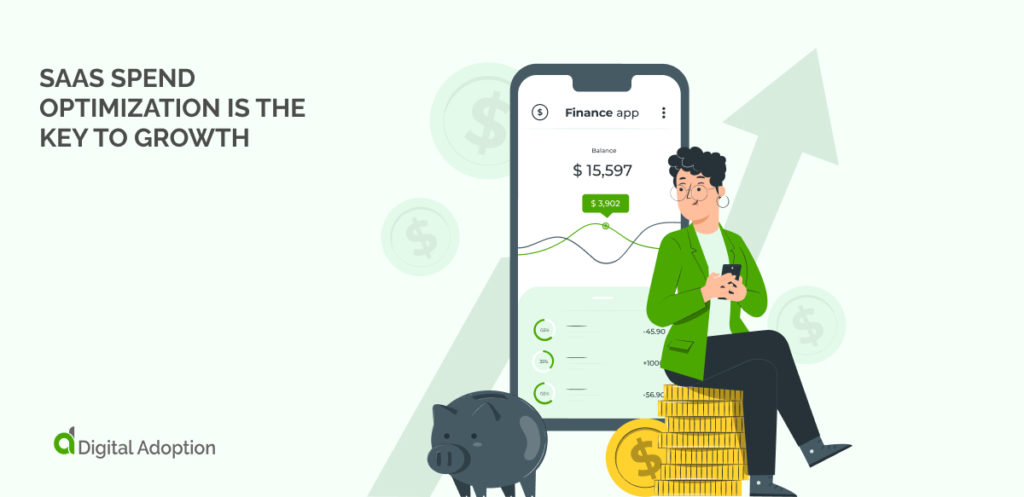
To optimize their spending on SaaS-based products, businesses can utilize SaaS optimization tools that help them identify waste areas and create cost savings. This allows companies to builddigital resilience when expanding into new markets and increasing customer satisfaction through increased marketing campaigns while optimizing resources.

